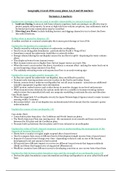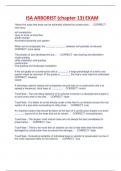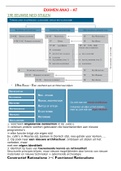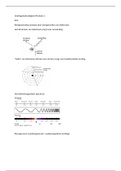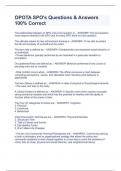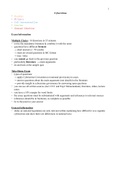Summary
Summary Physical geography A level essay plans
- Module
- Unit 1 - Dynamic Landscapes
- Institution
- PEARSON (PEARSON)
This document provides an extensive list of essay plans for Geography A level according to the 2016 spec. Inside there are essay plans for coasts, water and tectonics, which cover many 4-20 markers. I achieved an A* in my exam and this was extremely useful for revision.
[Show more]
